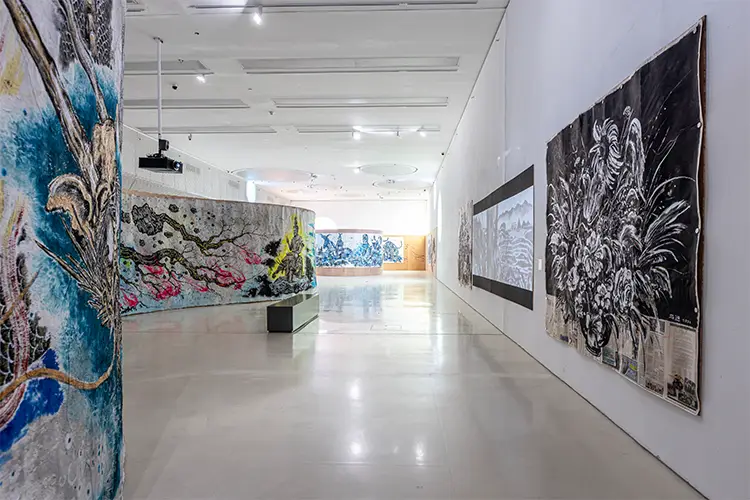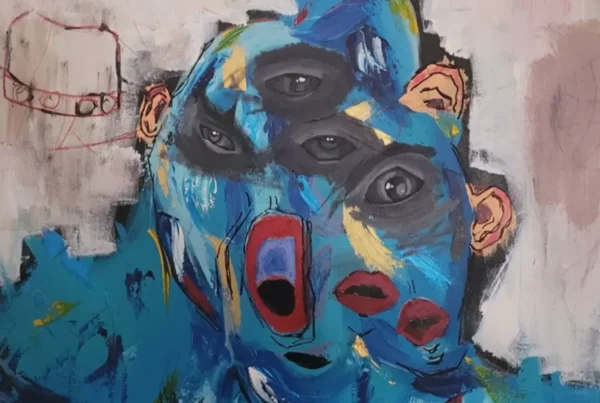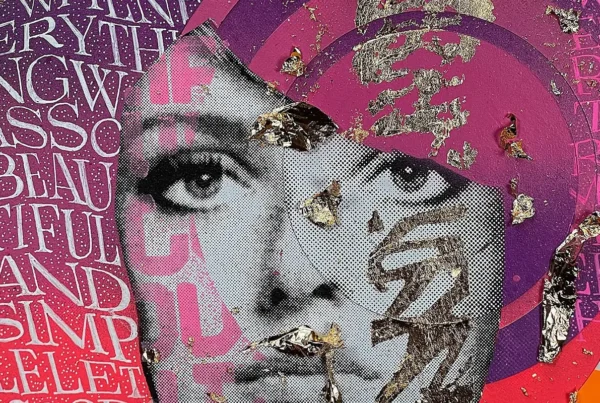“The knowledge of the true history of one’s country is a prerequisite for being a normal person, and being a normal person is a prerequisite for being an artist.”
Memory Without Borders
Sun Xun’s journey into the art world traces back to a coal-mining city in northern China, where he was born and raised amid industrial landscapes and layered legacies. This early environment, once the site of Asia’s largest open-pit coal mine, subtly shaped the conceptual grounding of his work. By age sixteen, he relocated to Hangzhou to study painting, immersing himself in a city once deemed the capital of the Southern Song Dynasty. This move exposed him not only to refined artistic traditions but also to a deeper understanding of how historical narratives morph over time. The echoes of dynastic shifts—from Kaifeng to Hangzhou, from the Jin to the Song—deepened his disconnection from fixed notions of national identity, forging a perspective rooted in observation rather than belonging.
This outsider’s stance, cultivated in his youth, significantly influences Sun’s creative expression. Rather than anchoring himself in a single tradition or viewpoint, he embraces a multiplicity of histories. His understanding of China’s turbulent 20th-century past was shaped by conflicting stories: the personal accounts shared by his father and grandmother about the Cultural Revolution and the Communist Civil War contrasted starkly with the sanitized versions he encountered in school. These opposing narratives instilled in him a critical awareness that continues to permeate his work. For Sun, grasping the genuine undercurrents of historical truth is not just important—it is essential for reclaiming personal integrity and artistic authenticity.
By positioning himself as an observer rather than a participant, Sun resists the confinements of ideology. His artistic motivation stems not from a desire to conform, but from a lifelong frustration with societal dishonesty. During his teenage years, this discontent grew into a form of resistance, and it was through art that he found an effective language of rebellion. The path to becoming a professional artist emerged naturally from this defiance. After producing a prolific body of work during his university studies at the China Academy of Art, he successfully sold his first pieces, setting in motion a career that would intertwine creativity with an unflinching commitment to historical and spiritual inquiry.
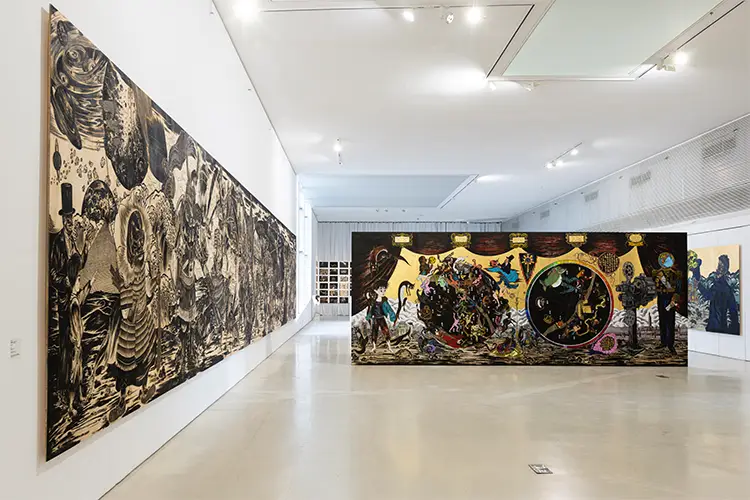
Installation view of Sun Xun: Magic Atlas at Times Museum, Guangzhou, China, July 19 – October 12, 2025, Photography: Peng Jing, Courtesy: Sean Kelly, New York/Los Angeles
Sun Xun: History as Material and Mirror
Sun Xun does not restrict himself to a single style or artistic lineage. Instead, his work shifts freely across mediums and traditions, weaving together techniques from both Eastern and Western cultures. He incorporates ink painting, woodcuts, animation, oil painting, calligraphy, and experimental forms, each chosen not for aesthetic consistency but for their ability to serve his evolving inquiries into history, ideology, and belief systems. These choices reflect a refusal to be hemmed in by the constraints of genre or expectation, allowing his work to function more as inquiry than artifact.
A consistent thread running through Sun’s practice is his preoccupation with history—not as a fixed narrative, but as a contested terrain shaped by memory, distortion, and silence. His work interrogates the politics of remembrance, drawing upon his own experiences of growing up under competing historical narratives. Rather than depicting history through literal re-creations, he layers symbols, allegories, and abstracted visual metaphors to examine how societies manufacture and consume their pasts. This analytical approach gives his work a conceptual density that invites sustained reflection rather than passive viewing.
Recently, Buddhist philosophy has emerged as a central influence in Sun’s artistic life, offering him a new framework through which to explore both personal and collective transformation. As he moves further into middle age, his commitment to Buddhist study and practice deepens. Rather than merely referencing Buddhist iconography, he engages with the discipline as a guiding principle, particularly through the lens of Zen thought. This shift has opened new creative possibilities, not only in terms of subject matter but also in how he approaches the act of creation itself—favoring presence over performance, intention over perfection.
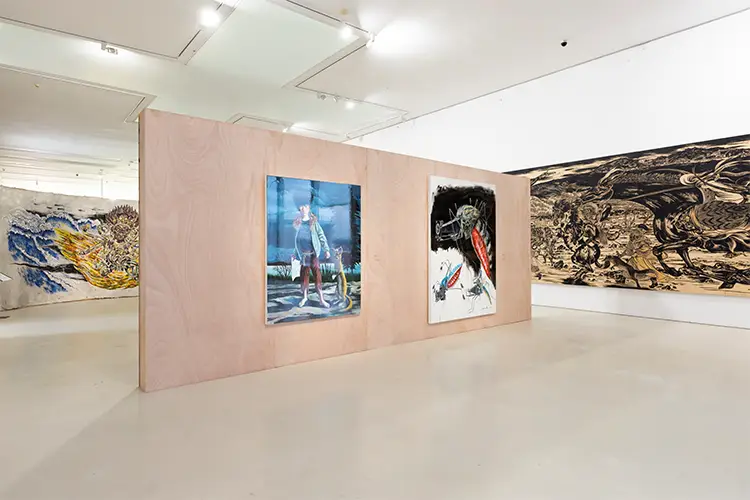
Installation view of Sun Xun: Magic Atlas at Times Museum, Guangzhou, China, July 19 – October 12, 2025, Photography: Peng Jing, Courtesy: Sean Kelly, New York/Los Angeles
Between Silence and Movement
Sun Xun’s working process defies conventional studio norms. He places no importance on the physical conditions of his workspace, claiming he can work just as efficiently on an airplane as in a studio. This detachment from external settings reflects his alignment with Buddhist thought, particularly the emphasis on inner awareness. For him, distractions are not obstacles to be eliminated, but mirrors through which the artist must examine his own mind. By recognizing the futility of emotions as control mechanisms, Sun seeks to neutralize them, allowing a clear path to creativity to emerge regardless of circumstance.
This spiritual discipline intersects with his medium of choice: animation. Sun considers animated film to be his primary mode of creation, but not in a rigid or exclusive sense. He readily works with any material he finds at hand, approaching art-making as a kind of wilderness survival—improvised, instinctual, and urgent. In his view, the artist is at his most honest when stripped of pretensions and immersed in the raw act of creation. This philosophy fosters a freedom in his practice that allows him to oscillate between polished cinematic work and spontaneous mark-making with equal commitment.
Among his many projects, one stands out with singular resonance: a recently completed animated film that took a decade to realize. More than a cinematic achievement, this work marked a transformative period in his life, guiding him toward heightened awareness of self, others, and the complexities of the world. The prolonged engagement with this film acted as a meditative journey, consolidating ten years of philosophical inquiry, personal reflection, and creative experimentation. It is not simply a work of art but a vehicle through which Sun mapped the shifting contours of his inner and outer life.

Installation view of Sun Xun: Magic Atlas at Times Museum, Guangzhou, China, July 19 – October 12, 2025, Photography: Peng Jing, Courtesy: Sean Kelly, New York/Los Angeles
Sun Xun: A Vision for Sacred Space
Looking toward the future, Sun Xun envisions a project that transcends the gallery system: an exhibition staged within a monastery. This idea is more than a novel curatorial choice; it represents a confluence of traditional sacred environments with the elasticity of contemporary art. By positioning artworks—ranging from classical techniques to avant-garde installations—within a monastic setting, Sun aims to amplify their spiritual resonance and allow the teachings of Buddhism to guide the audience’s interpretive journey. It is not just an exhibition, but a proposed collaboration between contemplative wisdom and artistic practice.
This dream project underscores his belief in the transformative power of space. In such a context, the artwork would not merely exist for visual consumption but would participate in a larger, immersive ritual of reflection and awareness. The monastery, as a site of discipline and surrender, offers a counterpoint to the spectacle-driven art world. Within these sacred walls, Sun envisions art regaining its contemplative potential, serving as a means of quiet questioning rather than loud assertion. It is a natural extension of his growing alignment with Zen aesthetics and his desire to create work that encourages viewers to turn inward.
Integral to this vision is the influence of Hakuin Ekaku, a Japanese monk-painter whose works have deeply affected Sun’s recent practice. Hakuin’s paintings, guided by Zen teachings, combine spiritual intensity with visual simplicity, offering a powerful template for art that speaks to both the senses and the soul. For Sun, this model encapsulates what art can become when it relinquishes ego and aligns itself with insight. Through the imagined monastery project, and through each piece he continues to create, Sun Xun pushes toward that possibility: art as a bridge between illusion and awakening, silence and speech, history and transcendence.
